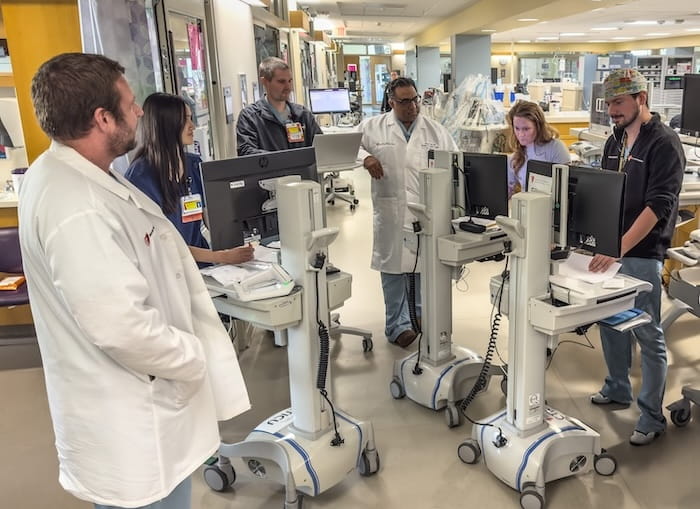How to Foster Excellence in Multi-team Health Systems
January 27, 2025

Excellence is a function of the choices we make. On an individual level, our diet, exercise and sleep habits can provide a strong foundation for achieving excellence. Our decisions to study and work diligently to the best of our ability in our professional lives also complement these personal choices.
However, excellence in healthcare is, of course, more complex than our individual choices. For one, clinicians rarely, if ever, work alone. To be clear, excellence in individual clinicians is essential. Yet healthcare is a team sport — or more appropriately, a team-of-teams sport. To care for patients, multiple teams must form, perform and sometimes disband to reconfigure as new teams. And these various teams must coordinate seamlessly with one another to achieve the best outcomes for our patients and attain that important marker of excellence.
As I said, it’s complex. How can we promote excellence in our multi-team systems with so many people involved and so many moving parts?
I believe the best approach involves a laser focus on coordinating various roles and tasks within and among various team members. It’s crucial, too, to know what the latest science is telling us about how to improve the performance of multi-team systems. The advances are significant. At my institution, we’re taking these important findings to heart to improve our multi-team systems, with a focus on improving access and value while eliminating harm, suffering, waste and inequities.
Three key activities stand out in the latest research for ensuring excellence in complex systems:
1. Lead
Leaders must commit to excellence and clarify goals, roles, resources and expectations. Among expectations, three are most important: Ensure everyone is treated with respect by everyone they encounter, provide people with the tools, training, technology to do their job with dignity, and recognize people for a job well done and coach and support others when they need to improve.
Leaders must also support the vital role of boundary spanners in multi-team systems. These are people who can build trust with people in other roles or working in other locations and solve problems. Boundary spanners are essential for excellence.
2. Standardize
Multi-team systems are riddled with ambiguity regarding who, what, where, when and how tasks are performed. This variation results in degraded performance, harm, suffering and waste. Teams, composed of people with different roles, must work collaboratively to decide the best way to perform a task and who should do it.
3. Learn and Continuously Improve
Multi-team systems must continuously learn and improve at the front-line and management level. These teams often must solve complex problems, which means they must innovate to find solutions. The tasks are many — they must navigate roles, responsibilities and relationships among different people, while rapidly identifying what works and what doesn’t, then adjusting accordingly. Teams must also ensure shared accountability, review performance at individual and team levels, celebrate those exceeding expectations, and support those who fall short in improving their performance. This learning and improvement cycle never ends.
A Patient-Centered North Star
Recently, I received a letter from a patient admitted to the hospital last fall, naming many of our caregivers from multiple roles and teams who made him feel cared for and respected. The excellence shown by all of our colleagues came shining through. This should be our north star, and it only happens with a strong culture, with norms, values and attitudes that promote team excellence.
For us to address our biggest problems in healthcare, in fact, we will need this level of team excellence as an industry. This will require us to coordinate the work of multi-team systems. With leadership, standardization, and learning and continuous improvement, we can meet this formidable challenge. We have the power to make the experience of this patient the norm, ensuring that we are always working as a high-performing team.
Dr. Pronovost is the Chief Quality & Clinical Transformation Officer and the Veale Distinguished Chair in Leadership and Clinical Transformation at University Hospitals.
Tags: Leadership


